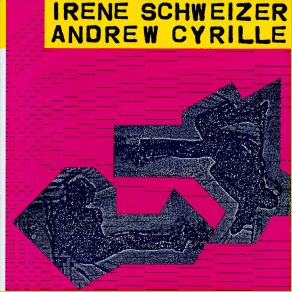Irène Schweizer - Andrew Cyrille / Irene Schweizer - Andrew Cyrille
Download links and information about Irène Schweizer - Andrew Cyrille / Irene Schweizer - Andrew Cyrille by Irene Schweizer. This album was released in 1990 and it belongs to Jazz, Avant Garde Jazz genres. It contains 6 tracks with total duration of 44:43 minutes.

|
|
|---|---|
| Artist: | Irene Schweizer |
| Release date: | 1990 |
| Genre: | Jazz, Avant Garde Jazz |
| Tracks: | 6 |
| Duration: | 44:43 |
| Buy it NOW at: | |
| Buy on iTunes $9.99 | |
Tracks
[Edit]| No. | Title | Length |
|---|---|---|
| 1. | Smashing Napf | 6:53 |
| 2. | Soft Inside | 3:23 |
| 3. | From Stafa to Willisau Via Music | 13:01 |
| 4. | As Time Goes On | 4:08 |
| 5. | Fiction of the 13th Kind | 12:41 |
| 6. | A Monkish Encore | 4:37 |
Details
[Edit]Here is another of pianist Irène Schweizer's duets with a powerhouse drummer, in this case, vanguard legend Andrew Cyrille, in a concert recorded live at the Willisau Festival in 1988. What is most remarkable about this session is how immediately the rapport between the pair is established. Schweizer goes after a rhythmic angular line, chopping it up into small staccato phrases, and Cyrille, using the entire wealth of his drum kit and gongs, feeds back her pulses as either specific accented answers or contrapuntal inversions that she takes enough delight in to lengthen her statements. There is no stalling between these two, no looking around for a language, it's all one syllable: "GO!" Schweizer moves through batteries of classical and jazz motifs, undulating her left-hand harmonics in sharp bursts of ostinato as her right explodes off the end of that periodic architecture. Cyrille doesn't dance around her — he plays to her ideas, moving his own into the center of the mix to create tension and continuum, not release. The hard boppish motif, layered in scalar runs and rim shots, that lies at the heart of "From Stäfa to Willisau Via Music" echoes both Monk and Stravinsky in alternating lines before giving way to Herbie Nichols, Tristano, and Schoenberg or Messiaen. It's Cyrille that cuts it loose from the traditions and brings it into the present day as a dialogue between them — not on jazz history, but on improvisational movement and the physicality of spontaneous composition. There are few expressions of spontaneous communication in improvisational music that could equal, let alone surpass, this one.